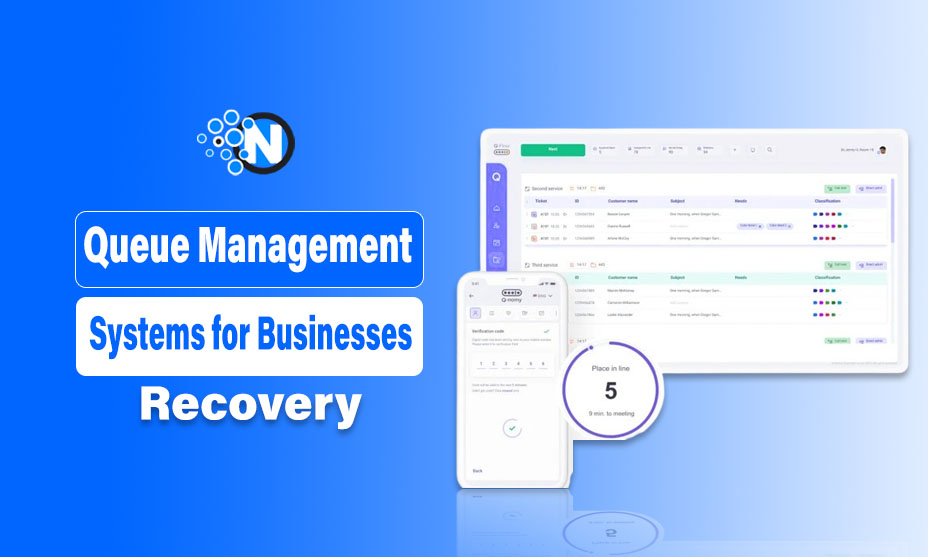How Queue Management Systems Can Help Businesses Recover Faster After Disruptions

A sudden service breakdown can throw businesses into chaos—long lines, frustrated customers, and exhausted staff. Recovering momentum is tough, especially when resources are tight and demand spikes.
But there’s a way to speed up recovery and make things run smoothly again—queue management systems. These systems help manage customer flow, optimize resources, and boost efficiency, making business recovery faster and easier.
Let’s dive into how they can help your business bounce back after disruptions!
What Challenges Businesses Face After Disruptions
When disruptions hit, businesses often struggle with immediate operational challenges that affect both customers and employees:
Increased Customer Demand
Clients visit for assistance once a business is closed or operates with minimum services in society after it reopens. Most of the time, a few business persons are called upon to attend to the many clients, which results in long queues of unsatisfied customers.
Staff Overload
Employees, already under pressure, may need help managing the influx of customers, which could result in burnout, inefficiency, declining service quality, and reduced business performance and morale overall.
Unpredictable Operations
It can disrupt routine operations to the extent that determining customer flow, resource allocation, service delivery, and the ability to change gears and respond to the dynamic environment characteristic of most businesses becomes complicated.
Though these issues may pose a recovery challenge, getting the business back on track is easier if the appropriate tool is available.
How Queue Management Systems Support Faster Business Recovery
A virtual queue management system helps businesses recover quickly by organizing customer flow and boosting staff efficiency.
Here’s how they help:
Streamlined Customer Flow
Customers can join virtual queues, receive updates about their wait times, and enjoy greater flexibility, preventing overcrowded spaces, reducing frustration, and enhancing their overall experience with more transparent communication.
Efficient Resource Allocation
Businesses can adjust staffing levels in real-time based on customer demand, ensuring every area is well-staffed and manageable while maximizing productivity and maintaining smooth, efficient operations during peak times.
Reduced Chaos
With an efficient queue management system, operations work better, allowing the business to concentrate on providing quality rather than dealing with different shortcomings from disorganization.
While these problems can complicate recovery, using the right tools can make getting the business back on track easier.
Improving Customer Experience During Recovery
Photo by Q-nomy
Customer experience is vital to business recovery, as stressed customers may leave if service is disorganized or wait times are long.
Queue management systems improve customer experience by:
- Reducing Wait Times: Virtual queues allow customers to see their place in line and receive accurate wait-time estimates, minimizing frustration.
- Providing Flexibility: It lets customers wait freely without needing to line up at home during work or elsewhere physically.
- Clear Communication: Notifications and updates about service status keep customers informed, ensuring they feel valued and in control of their time.
In this way, businesses retain their customers during recovery and build stronger loyalty by providing a more positive experience.
Optimizing Resource Use and Business Efficiency
Photo by Q-nomy
Efficient resource management is crucial after a disruption, as businesses often face limited staffing, supplies, or space.
Queue management systems help optimize operations by:
- Real-Time Data Access: Managers can monitor customer flow and service demand, adjusting resources accordingly to avoid bottlenecks and understaffing.
- Smarter Scheduling: Businesses can make informed decisions about when and where to allocate staff by tracking peak times and customer needs.
- Maximizing Efficiency: These systems help businesses serve more customers in less time, increasing productivity while maintaining service quality.
Optimizing resource use ensures smoother recovery by improving customer and employee experiences.
The Role of Data and Analytics in Recovery
Data and analytics guide recovery, and queue management systems provide insights into customer behavior and performance to inform decisions.
Here’s how the data helps:
- Identifying Peak Times: Analyzing customer patterns helps businesses predict demand spikes and allocate resources efficiently.
- Improving Service Quality: Metrics like wait times, feedback, and service rates highlight areas for improvement, enabling quick adjustments.
- Continuous Improvement: Real-time data helps businesses spot inefficiencies, make quick adjustments, and ensure smooth recovery and success.
Takeaway: Speed Up Business Recovery
Queue management systems are a game-changer for large-scale businesses looking to bounce back quickly after disruptions.
By optimizing business operations, these systems enhance resource use, improve customer experience, and provide valuable data to guide recovery efforts.
Companies like Q-nomy offer solutions to streamline and recover faster, optimizing business operations to ensure disruptions don’t lead to long-term setbacks.
Implement a queue management system to improve business recovery and ensure smooth, efficient operations and long-term success after disruptions.
Please leave a comment and share your views or experiences in the same journey; also, drop any questions you may have during this!!




